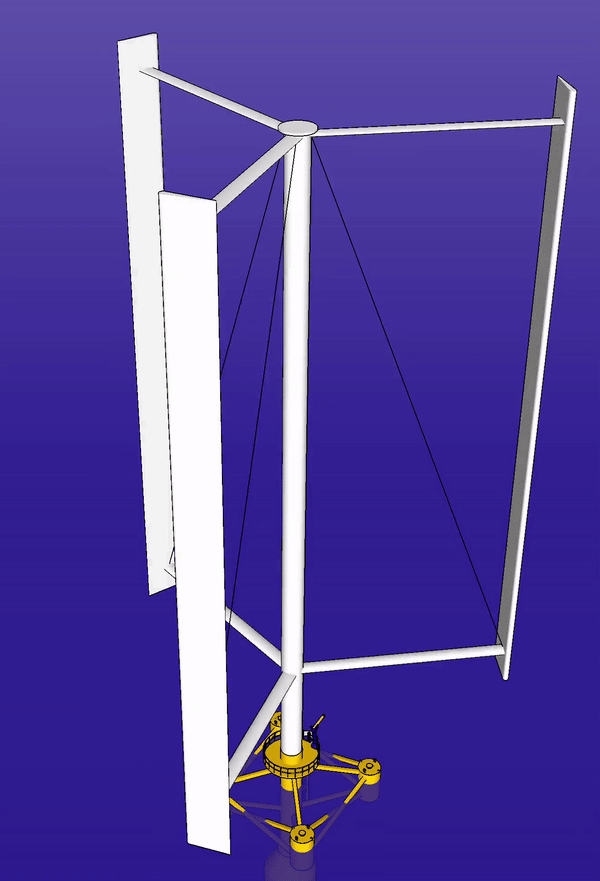
Scientists from the newly established junior laboratory of rotor systems for wind energy and transport in the Arctic zone at the Krasnoyarsk branch of the Institute of Thermophysics (IT) named after him, writes SS Kutateladze of the SB RAS, on August 7 in the SB RAS publication “Science in Siberia” with reference to the press service of the institute.
A cycloidal rotor is a special propeller that can be used to generate thrust for aircraft and to convert wind or water energy into electricity in wind and hydroelectric plants.
Wind turbine rotor systems are used to provide electrical power to remote settlements, this is especially true in the Arctic zone, where local electrification of rotating camps with limited transport accessibility is necessary.
New rotor systems, used as propulsion systems for air transport systems, also have a number of advantages, such as low noise levels in unmanned aerial vehicles, as well as improved controllability of balloons and airships.
The head of the youth laboratory of IT SB RAS, candidate of physical and mathematical sciences Dmitry Dekterev, spoke about the work carried out there:
“The basis was our experience working on the Cyclone project with the Advanced Research Foundation to create an aircraft with a new type of propulsion. Data was obtained and developments were carried out that showed that these rotor systems can be used not only for the cycloplane under development, but also for the creation of wind energy equipment. In addition, it is proposed to use similar types of rotors as additional or even main propulsion for various aircraft.”.
The new type of rotors is distinguished by the fact that the angle of attack of their blades is constantly changing: during the passage of a circle, the blade swings from a negative angle of attack to a positive one and vice versa, creating thrust, the direction of which can be controlled. This increases the maneuverability of the vehicle and the efficiency of the rotor itself.
If such a propulsion device is installed on an aircraft, it will be able to ascend and descend vertically, overcome lateral wind gusts and rotate around its axis. In addition, the new system will allow it to land independently, without being tied to a mooring mast, as is currently necessary.
Many deposits have been discovered in the Arctic that are difficult to reach without aircraft, and large-capacity airships can be used to transport the coal or oil extracted there.
Another area of application for cyclic rotors could be wind energy. These rotors will increase the level of autonomy of turbines: they can be started even in light winds.
Although the same mechanism is used in airplanes and wind power, it is used in different ways. As Dmitry Dekterev explained, “In one case we rotate the rotor and create lifting force and the ability to control the device, in the other, it rotates independently under the influence of wind load or river flow”.
Currently, there are two types of wind power plants: horizontal-axial, in which the propeller axis is parallel to the ground, and vertical-axial, with the propeller axis perpendicular to the ground; it is in such installations that the cycloidal rotor is planned to be used. They are more convenient to operate, since in vertical-axis wind turbines the generating equipment is located on the ground.
The rotors currently used in wind power plants have low efficiency. “If we talk about wind energy, the maximum achievable kyiv (wind energy efficiency) level is 59.3%, i.e. 59% of the wind energy falling on the rotor can be converted into electrical energy in theory. Most existing wind power plants operate at between 20% and 40%.””Dmitri Dekterev noted.
Another problem that reduces the basic characteristics of the equipment, especially in Arctic conditions, is the formation of ice on the blades. IT SB RAS also aims to solve this. To do this, scientists in climatic chambers are studying the process of blade icing and compositions that will help reduce it.
“Currently, aerodynamic supports are being assembled in our laboratory and a scheme is being developed for implementing a cycloidal mechanism for turning the blades. First, the characteristics of the wind power plant in its classic design will be obtained and then it will be modernized to a cycloidal rotor. Then we will see how much the efficiency of using this system will increase.””, Dmitry Dekterev shared his plans for the upcoming investigation.
Source: Rossa Primavera
I am Michael Melvin, an experienced news writer with a passion for uncovering stories and bringing them to the public. I have been working in the news industry for over five years now, and my work has been published on multiple websites. As an author at 24 News Reporters, I cover world section of current events stories that are both informative and captivating to read.
